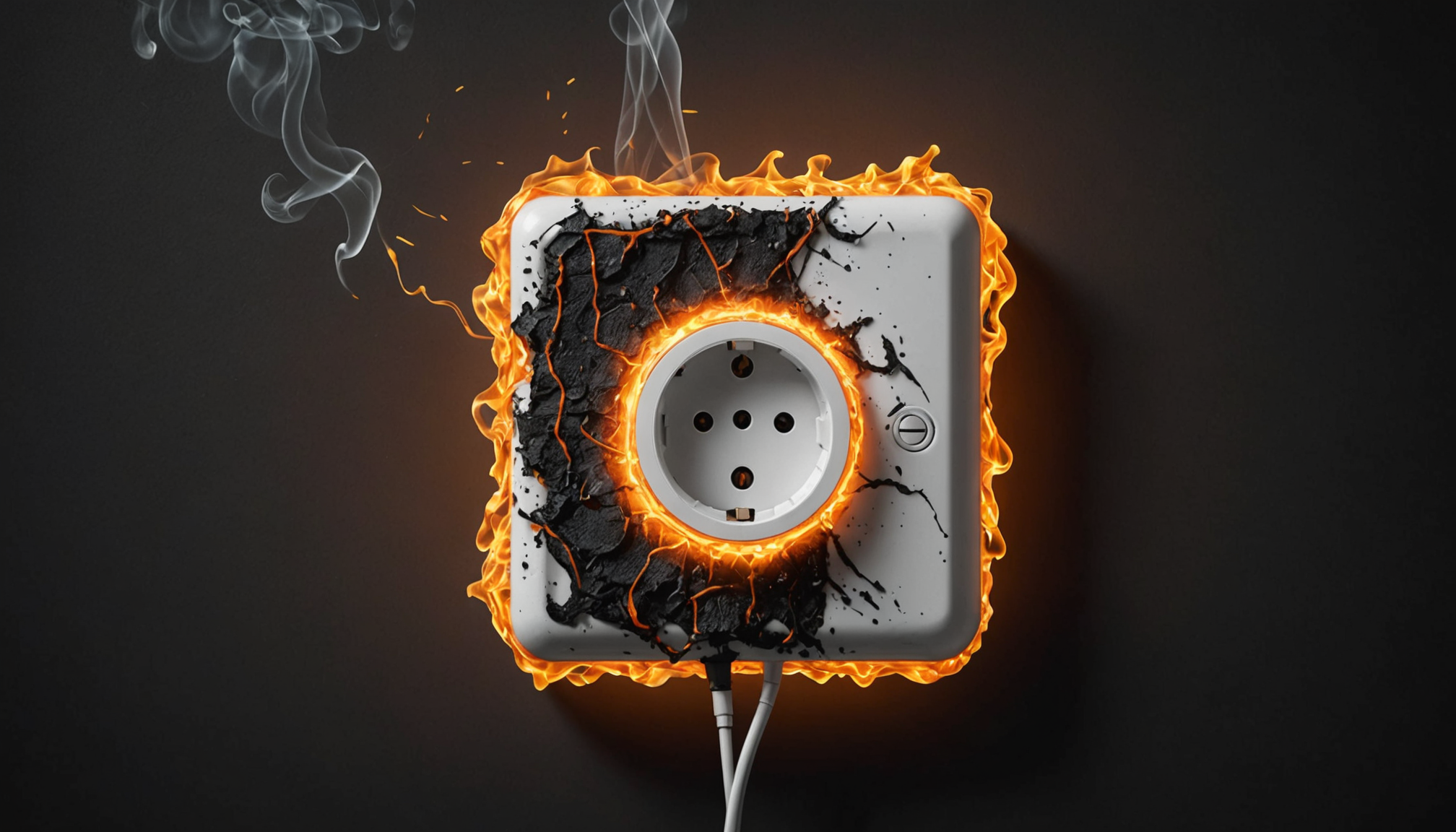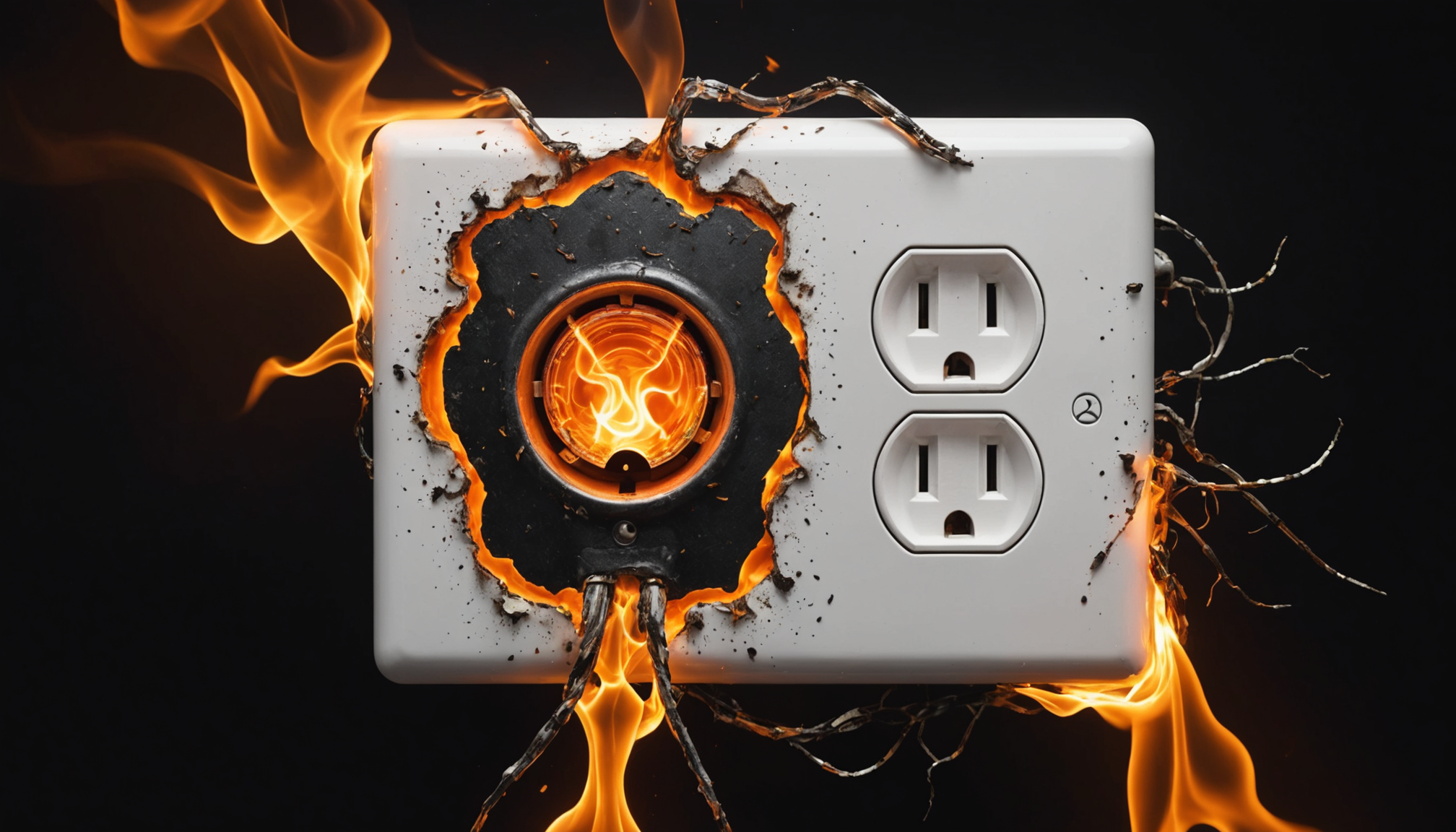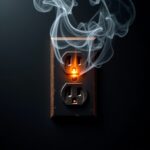Recognizing the telltale indicators of outdated wiring in your home can help prevent serious electrical hazards before they occur. If your house frequently experiences flickering lights, especially when using multiple appliances simultaneously, this could signal an overtaxed electrical system that needs attention.
Several visible warning signs suggest it’s time to address your home’s electrical infrastructure:
- Discolored or warm outlet covers and switch plates
- Burning odors coming from outlets or switches
- Buzzing or crackling sounds from outlets
- Frequently tripping circuit breakers or blown fuses
- Two-prong outlets instead of three-prong grounded outlets
- Absence of GFCI outlets in bathrooms, kitchens, or outdoor areas
Physical evidence of aging electrical systems often becomes apparent during home renovation projects. You might discover fabric-insulated wiring, aluminum wiring, or knob-and-tube systems—all clear indicators that your electrical system requires modernization.
| Warning Sign | Risk Level | Recommended Action |
| Burning smell | Severe | Immediate professional inspection |
| Flickering lights | Moderate | Schedule assessment within 30 days |
| Non-grounded outlets | Moderate | Plan upgrade during next renovation |
| Hot switch plates | High | Professional evaluation within 7 days |
Be particularly vigilant if your home was built before 1970, as these properties often contain outdated wiring systems that don’t meet current electrical demands. Modern households typically use far more electronic devices and appliances than homes did several decades ago, putting additional strain on aging electrical systems.
Another crucial indicator is the electrical panel itself. If you notice a fuse box instead of a circuit breaker panel, or if your panel is labeled Federal Pacific Electric, Zinsco, or has less than 100-amp service, these are red flags that require professional attention to ensure your home’s safety and compliance with current electrical codes.
Common hazards of old wiring
Outdated wiring presents several serious hazards that can put both property and lives at risk. The most immediate dangers stem from deteriorating insulation materials, which can expose live wires and create potential fire hazards. Here’s a comprehensive breakdown of the primary risks:
- Fire Hazards:
- Frayed or cracked wire insulation can cause sparks
- Overheated wires due to insufficient capacity
- Accumulated dust in old wiring can ignite
- Shock Risks:
- Exposed wiring in walls and ceilings
- Ungrounded systems lacking proper safety mechanisms
- Deteriorated wire connections in junction boxes
- System Overload Issues:
- Inadequate amperage for modern appliances
- Overheated circuits during peak usage
- Voltage drops affecting sensitive electronics
Particularly dangerous are outdated wiring systems like aluminum wiring and knob-and-tube installations, which pose significant risks during home renovation projects. Aluminum wiring, commonly used in the 1960s and early 1970s, can become loose at connections and create hot spots. Knob-and-tube wiring lacks a ground wire and can’t safely handle modern electrical loads.
Electrical hazards become more pronounced when old wiring interfaces with modern appliances and electronics. The insulation on aging wires can brittle and crack, especially in areas subject to temperature fluctuations or moisture exposure. This deterioration accelerates when the wiring is repeatedly stressed by loads exceeding its original design capacity.
Hidden dangers often lurk behind walls, where old wiring may have been improperly modified during previous renovations. Spliced connections made outside junction boxes, overloaded circuits, and improper wire routing through insulation can create fire hazards that remain undetected until a serious problem develops.
Electrical system lifespan and guidelines
Proper understanding of electrical system longevity and compliance requirements is crucial for maintaining a safe home environment. Most residential electrical systems are designed to last between 30 to 40 years, though this timeline can vary significantly based on installation quality, environmental conditions, and usage patterns.
Here’s what homeowners should know about electrical system durability:
- Wiring Lifespan: Quality copper wiring can last up to 100 years, but its insulation typically deteriorates much sooner
- Service Panel Age: Circuit breaker panels generally need replacement every 25-40 years
- Outlet Durability: Electrical outlets should be replaced every 15-20 years due to internal wear
- GFCI Components: Should be tested monthly and replaced every 10 years
Modern electrical standards require specific safety features that outdated wiring systems often lack. Current guidelines mandate:
- Minimum 100-amp service for most residential properties
- Dedicated circuits for major appliances
- GFCI protection in wet locations
- AFCI protection for bedroom circuits
- Proper grounding throughout the system
During home renovation projects, it’s essential to evaluate whether your electrical system meets these requirements. Properties built before 1990 may need significant upgrades to handle modern electrical demands, especially considering today’s increased reliance on electronic devices and high-power appliances.
Regular system assessment becomes particularly important as your electrical infrastructure ages. Industry experts recommend professional inspections every 5-10 years, with more frequent checks for homes over 25 years old. This helps identify potential electrical hazards before they become serious safety risks and ensures your system remains capable of meeting your household’s power demands.
Remember that electrical codes are regularly updated to reflect new safety standards and technological advances. What was considered safe and sufficient when your home was built may no longer meet current requirements or handle modern power needs effectively.
Upgrade costs and planning considerations
• House size and accessibility
• Local labor rates and permit fees
• Material costs and wire type selection
• Extent of necessary repairs and upgrades
• Wall and ceiling repairs post-installation
Budget planning should account for these additional considerations:
- Electrical panel upgrade: $1,500-$4,000
- GFCI outlet installation: $120-$250 per outlet
- Rewiring individual rooms: $400-$1,500 per room
- Service upgrade to 200 amps: $2,000-$5,000
To effectively manage costs during home renovation projects involving outdated wiring, consider a phased approach:
Phase 1: Address immediate safety concerns
Phase 2: Upgrade essential living areas
Phase 3: Complete remaining improvements
Many homeowners find it beneficial to coordinate electrical upgrades with other renovation work, as this can reduce overall costs by sharing expenses for wall access and repairs. However, never compromise safety to save money—electrical hazards require prompt attention regardless of budget constraints.
Financial planning options include:
• Home improvement loans
• Home equity lines of credit
• Contractor financing programs
• Energy efficiency rebates
• Insurance discounts for safety upgrades
When gathering quotes, ensure contractors provide detailed breakdowns of:
• Materials and labor costs
• Permit fees and inspections
• Timeline estimates
• Warranty information
• Cleanup and repair services
Remember to factor in potential additional expenses such as temporary accommodation if the power must be shut off for extended periods, or the cost of upgrading major appliances to match new electrical specifications.
Professional inspection and assessment tips
A thorough professional inspection is crucial for accurately assessing your home’s electrical system condition. Licensed electricians use specialized tools and techniques to evaluate wiring safety and identify potential hazards that might not be visible to homeowners. During these inspections, professionals typically employ thermal imaging cameras to detect hot spots in walls, which can indicate dangerous wiring conditions.
Key areas that experienced electricians examine include:
• Main service panel connections and capacity
• Branch circuit wire conditions
• Outlet and switch functionality
• Ground fault protection systems
• Junction box installations
• Wire insulation integrity
When scheduling an inspection, ensure the electrician:
• Is properly licensed and insured
• Has experience with outdated wiring systems
• Provides detailed written reports
• Uses modern diagnostic equipment
• Follows current electrical codes
• Offers clear explanations of findings
Professional inspectors will conduct both visual and technical assessments:
• Load calculations for current usage
• Voltage drop measurements
• Circuit mapping and labeling
• Insulation resistance testing
• Ground system verification
• Arc fault detection
During home renovation projects, having a comprehensive electrical assessment helps prevent unexpected issues and ensures all modifications comply with current safety standards. Inspectors can identify potential problems before they become electrical hazards and provide detailed recommendations for necessary upgrades.
Documentation from these inspections should include:
• Photographic evidence of issues
• Detailed cost estimates for repairs
• Prioritized list of needed improvements
• Timeline recommendations
• Code compliance analysis
• Safety improvement suggestions
Testing procedures should verify the integrity of both visible and concealed components, with special attention paid to areas where previous modifications may have compromised system safety. This thorough approach helps create a clear roadmap for any required electrical system updates.











